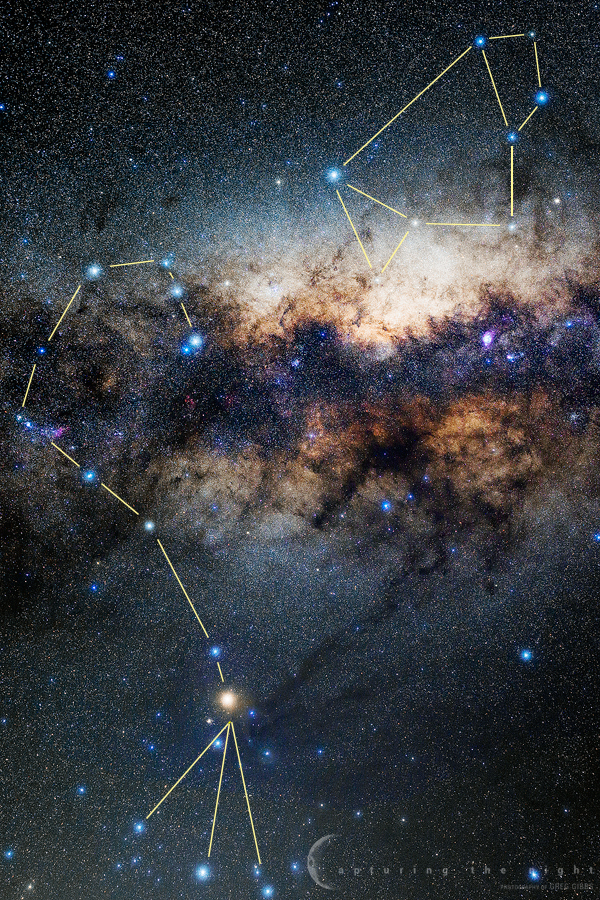In my opinion one of the most important keys to being a successful night sky photographer is learning the night sky. Technique and equipment help, but if you don’t know at least a bit about what you are photographing, and where and what time of year/night to find certain features, then you will be shooting in the dark in more ways than one.
Most people associate the Milky Way with the section of sky in the above image, but the fact is that every single thing (with three exceptions- The Andromeda Galaxy and The Large and Small Magellanic Clouds) that we can see with our own eyes in the night sky without the aid of binoculars or telescopes is part of The Milky Way. It is our home galaxy and it surrounds us all. Some areas of it are more photogenic than others though, and the section above is certainly a crowd favorite. So how do you find it? The central bulge of the Milky Way is centered around the constellations of Sagittarius and Scorpius. Scorpius is probably one of the easiest constellations to identify because it really does look like a scorpion (if you use just a little bit of imagination). Most constellations you have to use a LOT of imagination. Sagittarius as a whole is one of these, but it does contain a familiar asterism called the “Tea Pot” (upper right- pretty much upside down). So if you can find these two in your night sky then you are looking at the center of our galaxy.
Smart phone apps are good for showing you what you are currently looking at but it is no good turning up to a spectacular location only to discover that the section of sky you wish to image is in completely the wrong direction to the scene you wish to capture, or it is the wrong time of year for it to even be in the sky. So by learning the night sky you can plan your night sky shots in advance. I use a planetarium program called Stellarium and it is great for learning when and where certain areas of the night sky will be.
Image details:
Canon 5D MkII
Star Tracking with an NEQ6 Pro Telescope Mount
50mm F/1.8 lens at F/5.6
ISO 800

